
Flea Treatment and Control in Charleston County, SC
Fleas don’t care how tidy your home is—give them warmth, humidity, and a host, and they’ll multiply quickly. In Charleston County, SC, the Lowcountry climate is tailor-made for fleas: long warm seasons, frequent summer storms, shaded yards, and moisture-holding crawl spaces. From historic single houses downtown to riverfront properties in West Ashley, townhomes on Daniel Island, and family neighborhoods across Mount Pleasant, James Island, Johns Island, North Charleston, Hanahan, Goose Creek, and Summerville, residents see the same story each year—pets start scratching, itchy bites show up around ankles and calves, and tiny, fast-moving specks vanish into carpet seams before you can react. Left unaddressed, fleas can make life miserable for people and pets, trigger allergic dermatitis, and spread pathogens and tapeworms to pets that ingest infected fleas.
All U Need Pest Control delivers flea treatment in Charleston County, SC that’s built for coastal conditions. We combine thorough inspection, targeted interior and exterior applications, pet-safe recommendations, and humidity/harborage corrections that prevent rebound. Our focus is simple: eliminate the population you have now and block the next wave driven by the Lowcountry’s heat and moisture. With clear prep guidance, friendly scheduling, and follow-through that keeps you informed, you’ll get fast relief and durable protection—without turning your home into a chemistry set. Call 1 (888) 239-BUGS (1-888-239-2847) to schedule a free inspection and get your plan started today.
Pest Control Services in Charleston County, SC
- Ant Control
- Bed Bug Control
- Beetle Control
- Cockroach Control
- Home General Pest Control
- Hornet Control
- Millipede Control
- Mosquito Control
- Pantry Pest Control
- Rat & Rodent Control
- Scorpion Control
- Silverfish Control
- Spider Control
- Stink Bug Control
- Termite Control
- Tick Control
- Wasp Control
- Winter Control
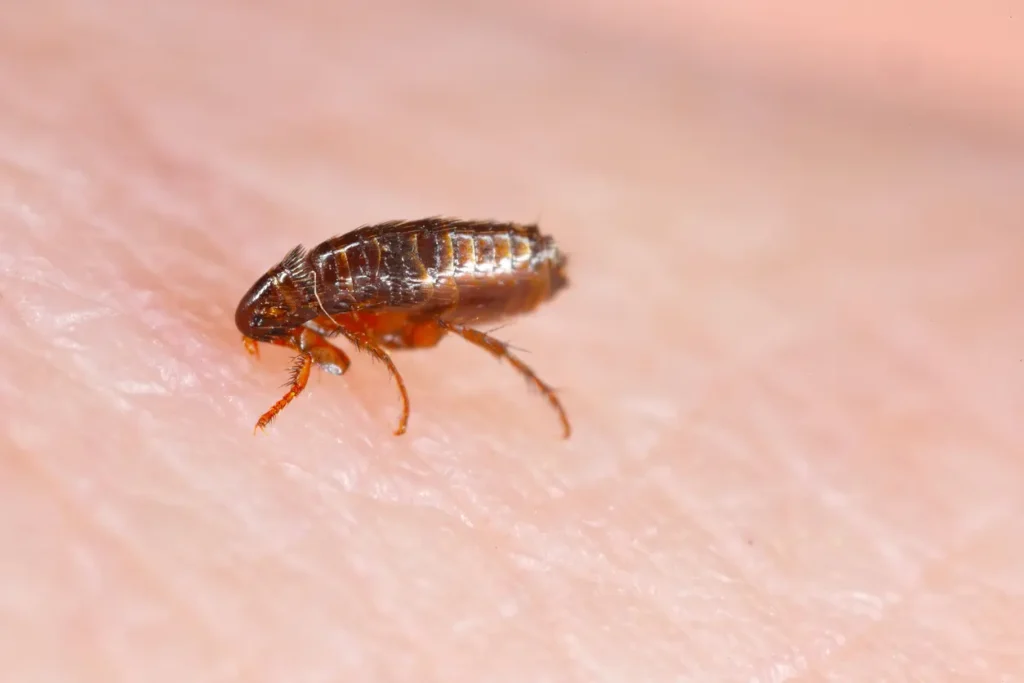
How To Get Rid of Fleas in Charleston County, SC
Success in Charleston starts with understanding what’s different here. Fleas thrive when humidity stays high, when shaded landscapes hold moisture near foundations, and when pets (or visiting wildlife) provide a steady blood meal. The Lowcountry’s raised homes on brick piers, ventilated crawl spaces, and dense plantings (think azaleas, ligustrum, jasmine, and live oaks) give fleas abundant places to shelter while eggs, larvae, and pupae develop. That’s why a single spray or one-time vacuum won’t solve a serious infestation; you have to interrupt the life cycle in every place fleas live—on the pet, in the house, and in the yard.
Here’s the core approach our Charleston technicians follow:
- Treat the pet, the home, and the yard—together. Skipping any one leg lets the population rebound.
- Target every life stage. Adulticides knock down active fleas; insect growth regulators (IGRs) stop eggs and larvae from becoming biting adults.
- Manage moisture and harborage. Dry, bright, and tidy spaces are harder for fleas to colonize—especially around crawl-space entries and shaded landscape edges.
If you’re seeing bites or black “pepper” specks (flea dirt) on bedding, rugs, or pet areas, act quickly. Fleas reproduce rapidly—females can lay dozens of eggs per day—and eggs fall wherever pets rest or travel. In a few weeks, your home can support several overlapping generations unless you disrupt development with the right products and consistent cleaning.
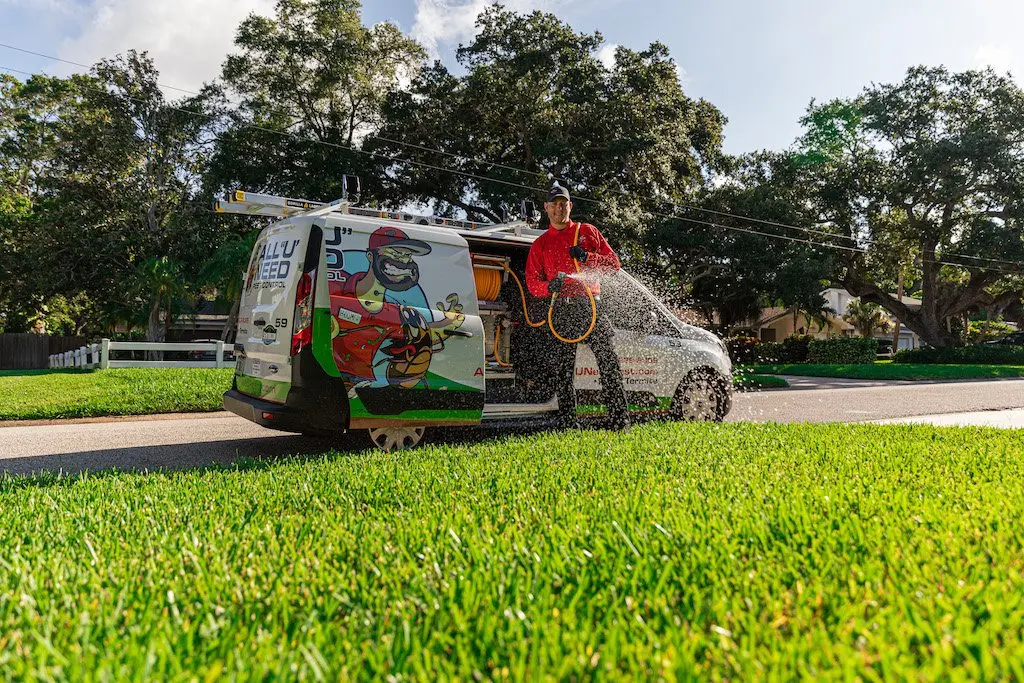
Flea Treatment in Charleston County, SC
We build each plan around your home’s style (historic single, raised cottage, slab ranch, or townhome), your pets’ routines, and your landscape conditions. Treatments are precise, low-odor, and chosen to work in humid, storm-prone weather—so they keep performing between visits.
Granular Chemical Treatments
Exterior pressure fuels indoor problems. In shaded turf, beneath decks and porches, under shrubs and along fence lines, we apply professional granular or microencapsulated treatments designed to persist in Charleston’s heat and humidity. Where appropriate, we pair these with IGRs that settle into the thatch layer and soil top-film, targeting larvae where they feed on organic debris and flea dirt. Placement beats volume: we focus on pet runways, under favorite resting spots, around crawl-space doors, along shed perimeters, and in the first few feet of turf and mulch near the foundation. After major rain events or king tides that raise groundwater, we adjust timing to keep protection active where it matters most.
Flea Baths for Pets
Your veterinarian is your best partner for pet-level protection. Consistent use of vet-recommended oral or topical preventives provides month-long (or longer) knockdown of adult fleas that hop onto your animal. For active infestations, a flea bath or quick-acting oral product can provide immediate relief while professional treatments take effect around the home and yard. We’ll coordinate our schedule so your pet care and environmental treatments work in concert—minimizing discomfort for your animals and accelerating results. If your household includes cats, dogs, or sensitive breeds, we’ll tailor prep instructions and product choices accordingly.
Integrated Pest Management (IPM)
In Charleston, IPM makes all the difference. We pair targeted chemistry with non-chemical steps that reduce humidity and harborage, making each follow-up easier.
- Vacuuming protocol. Daily (then every other day) vacuuming for two weeks in high-use rooms triggers pupae to emerge and removes eggs and larvae. Focus on baseboards, rug edges, under furniture, and your pets’ favorite napping spots. Empty the canister outdoors.
- Laundry cadence. Wash pet bedding, throw blankets, and removable cushion covers on hot, then dry on high heat to kill eggs and larvae.
- Humidity management. Run bath fans long enough to clear steam; use dehumidifiers in damp rooms; keep crawl-space vapor barriers intact and consider encapsulation if humidity stays high.
- Yard hygiene. Mow routinely; rake thatch and leaf litter; thin dense groundcover and pull mulch back a few inches from the slab or piers to speed drying.
We also address wildlife vectors—opossums, raccoons, and feral cats—in cooperation with local guidelines, since they can seed yards with new adults. If wildlife activity is persistent, we’ll recommend practical deterrents and sanitation changes.
Developing Customized Treatment Plans
Every home has a different “flea map.” We start with a comprehensive inspection, interview you about pet habits and travel (dog parks, beaches, boarding), and document hot spots inside and out. Then we deliver a two-phase plan:
- Phase 1: Knockdown + IGR. Interior crack-and-crevice applications and discreet surface treatments in low-traffic areas, exterior turf/bed applications with IGR, and a clear vacuuming/laundry schedule.
- Phase 2: Follow-up & fine-tuning. We revisit in 10–14 days to re-treat high-pressure zones, verify control, and adjust based on activity data (trap counts, vacuum contents, new bite reports).
Most Charleston homes reach comfort fast when pet preventives, interior treatments, and yard corrections run in parallel. For households with heavy carpeting, multiple pets, or frequent guest animals (e.g., Airbnb), we may add a third check to ensure long-term stability.
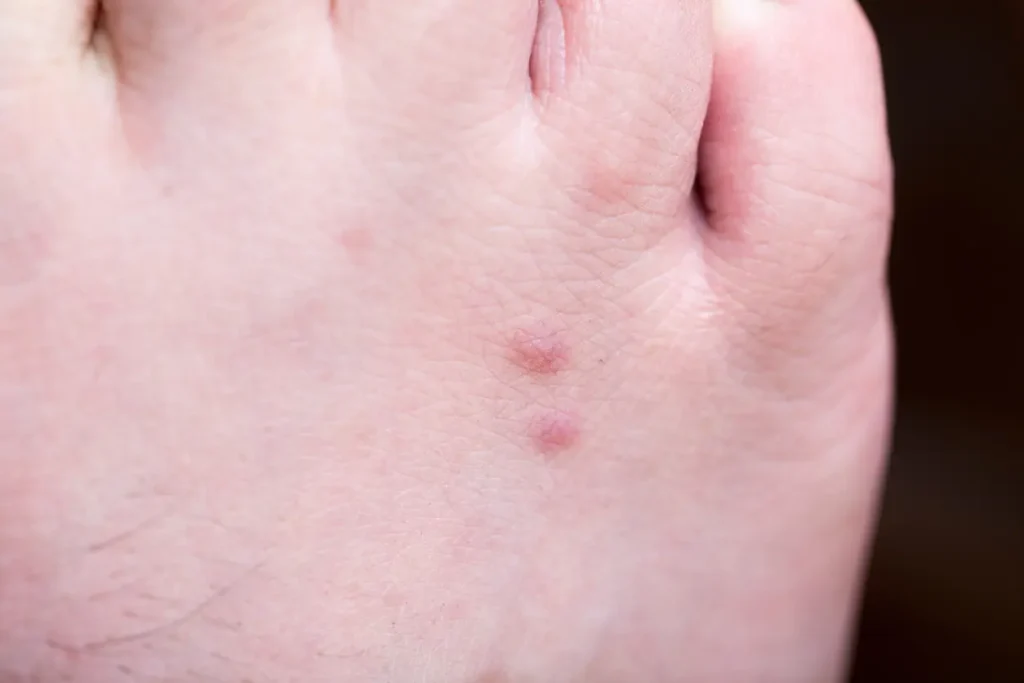
Signs of a Flea Infestation in Charleston County, SC
Fleas are tiny and fast, so you’ll often notice effects before you spot an adult. Pets scratch or chew persistently—especially near the tail base, abdomen, and hindquarters. People develop itchy clusters or lines of small red bites on ankles, calves, or around elastic bands where clothing meets skin. Around beds, sofas, pet crates, and area rugs, you might find black specks that smear red-brown when wet—that’s flea dirt (digested blood). Larvae resemble tiny pale threads in protected edges of carpets or pet bedding.
Charleston County’s humidity can hide activity for weeks; a burst of warm, wet weather often “wakes up” dormant pupae. If bites seem to appear suddenly after a storm or when you return from travel (and the house has been quiet), pupae likely matured while you were away and emerged when they sensed vibration and carbon dioxide. That’s the ideal moment to implement a staged plan before the next generation lays eggs.
How To Check for Fleas
A few simple checks confirm whether fleas are active and where they’re concentrated. Comb your pets over a light-colored towel; look for fast-moving dots and flea dirt. In rooms where pets rest, wear white socks and shuffle across carpets; adults will jump and may cling to the fabric. Inspect baseboard seams and the underside of rugs with a flashlight. In yards, focus on shaded areas where pets lounge—under decks, beneath shrubs, and along fence lines. If you’re unsure, place a few glue monitors at floor-wall junctions near pet beds and sofas; we’ll interpret results at your visit and map treatments accordingly.
What Do Fleas Look Like?
Adult fleas are small, dark, and laterally flattened—perfectly shaped to slip through fur and fabric. At just a few millimeters long, they move by jumping rather than flying and can vanish into carpet tufts in a blink. Eggs are tiny, smooth, and pearly white; they roll off the host wherever pets rest. Larvae avoid light and feed on organic debris and flea dirt deep in fibers and cracks. The pupal stage is the wildcard—protected in a cocoon that can wait weeks for vibration, heat, or carbon dioxide cues. Treatments that include IGRs and persistent coverage are essential to defeat this staggered life cycle.
Eco-Friendly Solutions
We design flea control that’s effective and responsible. Our default is targeted placement, low-odor formulations, and the smallest footprint that achieves full control. If you prefer an interior-light approach for historic finishes, we can bias toward yard treatments, crack-and-crevice work, and rigorous IPM steps inside. In select voids or baseboard seams, desiccant dusts can enhance long-term suppression without broad spraying. We’ll always align with your family’s needs, pet sensitivities, and Charleston’s coastal environment.
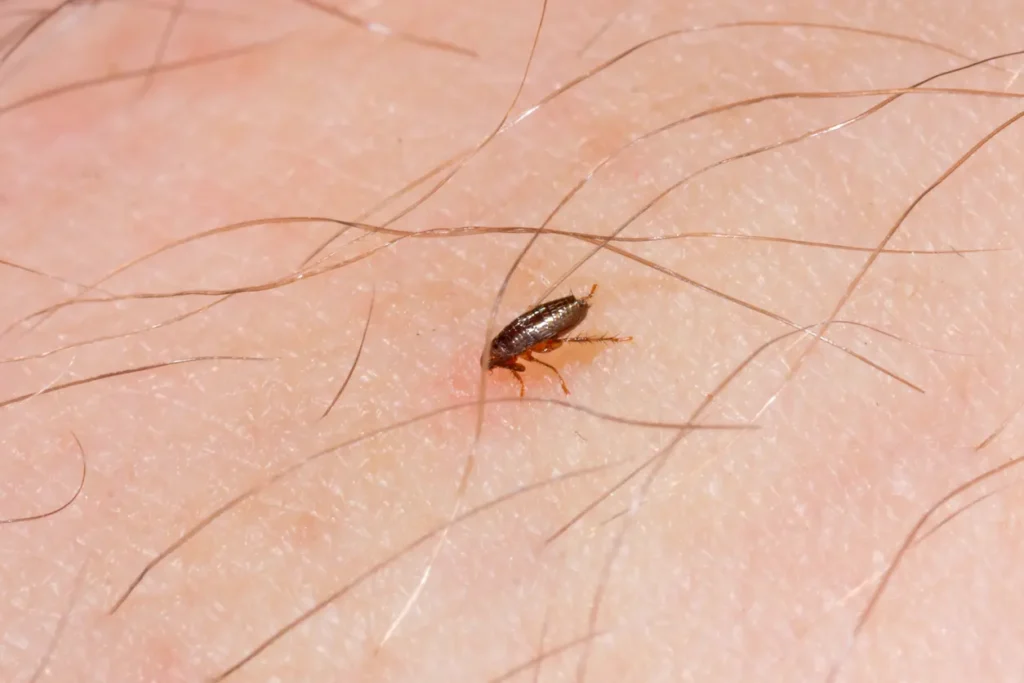
How To Prevent Fleas in Charleston County, SC
In Charleston County, prevention means stacking small advantages so fleas never gain momentum. Start with consistent pet protection: maintain vet-recommended preventives year-round, not just in summer. Keep a calendar reminder to dose on time, and coordinate doses among all dogs and cats in the household.
Next, manage moisture and harborage. Keep crawl-space vapor barriers intact; consider dehumidification or encapsulation if humidity stays high. Extend downspouts, fix gutter leaks, and correct low spots where water pools near porch steps or piers. In the yard, mow regularly, thin dense groundcovers, and pull mulch back from the perimeter by a few inches to let the first foot of soil dry faster. For pet zones, elevate beds off bare soil and rotate resting spots to avoid “flea hubs.”
Indoors, make vacuuming easy and frequent. Use a HEPA-equipped vacuum to pull fine debris (and allergens) from seams, and vacuum pet resting spots, rug edges, and beneath furniture. Launder pet bedding weekly; add removable covers to sofas and beds to streamline wash cycles. Store seldom-used textiles or keepsakes in sealed plastic bins rather than cardboard, which harbors dust and organic debris larvae feed on.
If you enjoy Charleston County’s dog parks, beaches, and trails, a simple re-entry ritual helps: quick comb-out on a porch, wipe paws and undercarriage, and park pet blankets or seat covers in a dedicated bin for routine washing. These habits keep hitchhikers from seeding new populations indoors.
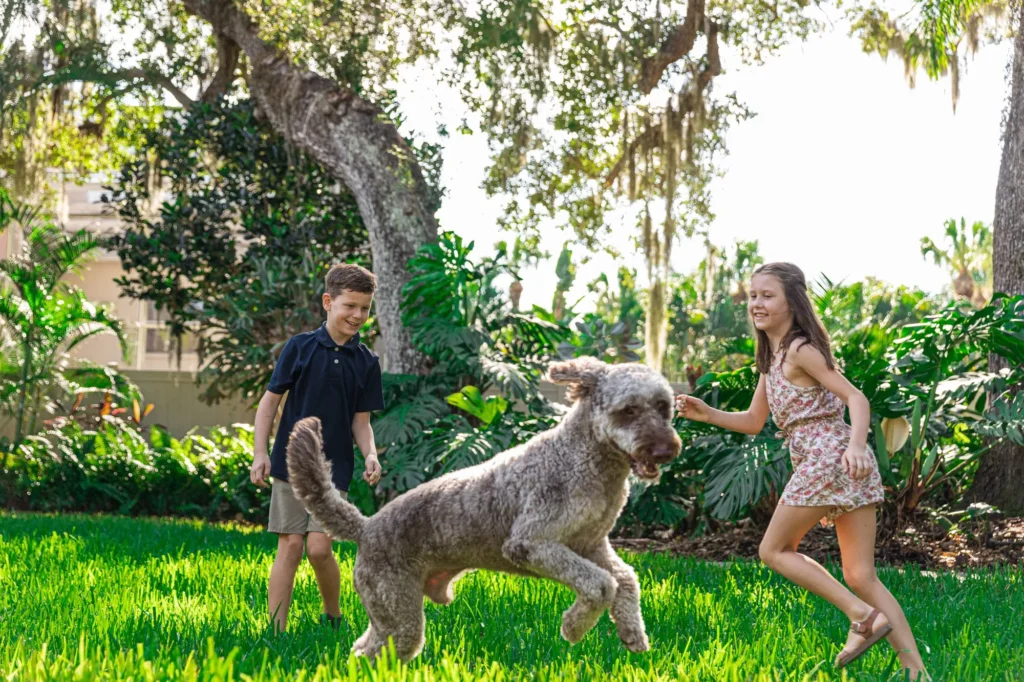
Controlling Flea Infestations in Charleston County, SC
Flea control isn’t guesswork—it’s a system. With All U Need Pest Control, you’ll get a clear roadmap, a precise treatment sequence, and coaching that fits your home and lifestyle. We coordinate with your vet approach, schedule visits around weather and your availability, and communicate what to expect at each step. Most importantly, we don’t leave you to “wait and see.” We verify progress at your follow-up, refine placements if hotspots remain, and adjust yard coverage based on shade patterns, pet behavior, and recent storms.
We proudly serve the entire tri-county area—Downtown Charleston and the Peninsula, West Ashley, Mount Pleasant, North Charleston, Daniel Island, James Island, Johns Island, Hanahan, Goose Creek, and Summerville, plus the barrier islands Folly Beach, Sullivan’s Island, and Isle of Palms. Whether you’re managing a historic home with a ventilated crawl space or a newer build on a slab, we’ll tailor the plan to your structure, microclimate, and pet routines, then keep your protection current as seasons change.
If fleas are biting, don’t wait for “winter” to solve a Lowcountry problem—the season is long here, and fleas rebound fast. Call 1 (888) 239-BUGS (1-888-239-2847) or contact us online for a free inspection and a Charleston-smart flea treatment plan. We’ll help you reclaim your home, protect your pets, and keep your Lowcountry lifestyle comfortable—year-round.
Location Contact:
419 N Cedar St Summerville, SC 29483
Get Directions for 419 N Cedar StSummerville, SC 29483 on Google Maps843-489-8818
Call All "U" Need Pest Control